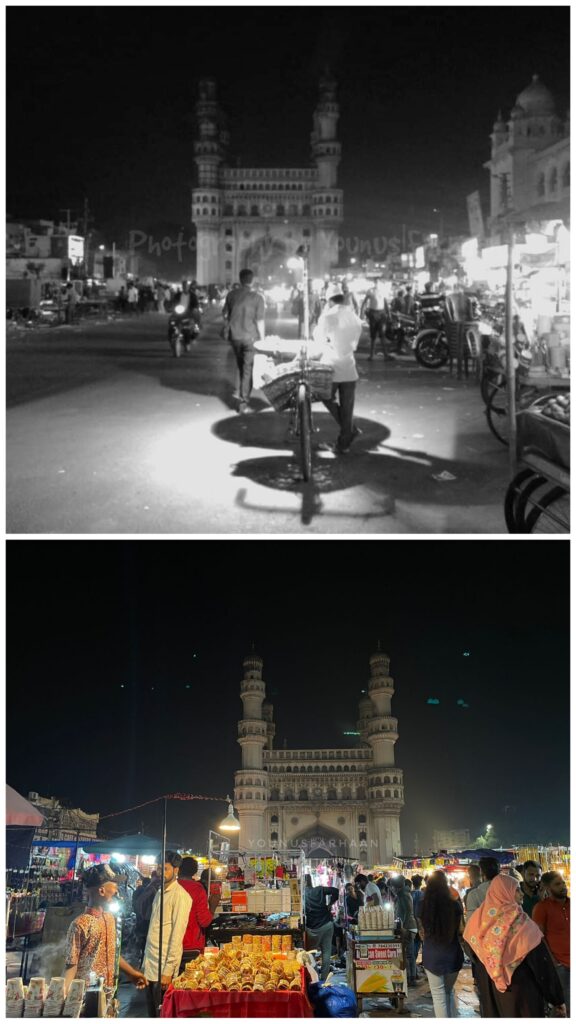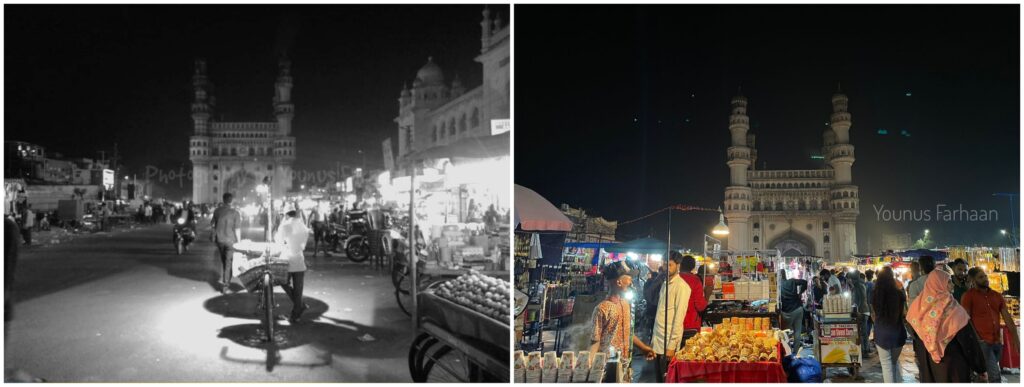
By Younus Farhaan
Hyderabad: Each of the Indian monuments signifies the rich heritage of ancient Incredible India, and Charminar upholds the tales and history of Hyderabad.
One of the oldest monuments in India, Charminar, also known as “Four Pillars”, is one of the official emblems of Telangana. It is surrounded by four roads, each leading to Gulzar Houz, Laad Bazaar, Sardar Mahal and Mecca Masjid.
It was built in 1591 by Muhammad Quli Qutb Shah, the fifth sultan of the Qutb Shahi dynasty. During the late 16th century, Hyderabad was besieged by a plague epidemic. It is believed that Quli Qutub Shah prayed that if the plague ends, he will build a structure to mark the end of the debacle.
And that is how the heart of the Old City, Charminar was born.

Soon after its establishment, diamond trading gained momentum leading to more revenue for the Golconda Kingdom.
Mir Momin Astarabadi, the prime minister of Qutb Shah played an important role in the design and layout with many deriving its inspiration from Indo-Islamic architecture with Persian elements.
Charminar stands near the banks of the Musi River and is closely situated to Laad Bazaar and Mecca Masjid.
Known for its busy local night markets, the Laad Bazaar and Pathar Gatti are famous jewellery and pearl markets attracting a large number of tourists every year. Apart from multi-colored bangles, the streets are adorned with a variety of footwear, bottles of attars that speak in roses and jasmines, mehendis, colourful dresses, fruits, crockery sets, and different types of sweet shops.
Besides the above, the Nimrah Cafe is one of the oldest and more visited cafes. Situated adjacent to Charminar, it serves the city’s famous Irani Chai along with biscuits, cakes and bread. Many who come for heritage walks, never forget to sip a cup from Nimrah.

Last year, the Telangana government decided to scrap the 24-year-old Charminar Pedestrianisation Project that was created under unified Andhra Pradesh in 1998 in order to give a facelift.
Tourists and photographers faced a regular challenge to capture the monument in its full glory parallelly facing the incoming traffic and overcrowded little shops selling trinkets, leaving very little space to stand.

A newer version – Charminar Historical Precinct Revitalisation Plan – was taken up by the IT minister K T Rama Rao. It now has bollards that restrict the movement of auto-rickshaws and two-wheelers to some extent.

During the holy month of Ramadan, Charminar is a sight to see. As one crosses the Purana Pul and enters Old City, a sea of people move towards Charminar, decked with colourful lights, screaming hawkers, the aroma of tasty samosas and Irani Chai as well as glittery shops adorned with pearls and bangles.



